Open Water: Kayak Fishing Offers Pursuit of Sport and Serenity
It’s 5 a.m. The sun hasn’t yet ventured above the horizon. Just minutes ago, the last bits of waning moonlight flickered sparingly along the shoreline and gently lit the glassy calm waters that now await me. The rhythm of the waves pairs with a cooling sea breeze and my thoughts steady. Until this moment, my mind has been aflutter—intensely focused on pre-launch routines and equipment checklists.
I’m not even in the water yet—my fish box is empty—but I know already it’s going to be a spectacular day. Without question, kayak fishing has changed my life.I remember feeling bound to crowded public access “hotspots,” often fishing shoulder to shoulder with strangers—risking tangled lines and subsequent politics. And those experiences themselves weren’t often all I’d hoped they’d be. Someone would almost inevitably have staked claim to the best spot moments before my arrival. Competition was fierce and the fishing pressure was undeniable. There were simply too many hooks in the water… surely the fish knew about these places—and avoided them. I’d often find myself daydreaming about more distant possibilities. Could I wade out from shore? Perhaps I could find a way to cast just a bit further with a longer rod or extra weight? And then one day, while fishing on a crowded pier, I saw the solution I’d been hoping for.
Across from me, slinking quietly out of a low fog bank was a bright yellow kayak. It was familiar in a way, but also unlike anything I’d seen before. The long, sleek shape I’d often observed in nearby creeks had been reimagined into a shorter, wider specimen—an almost rugged presentation. At its stern there were fishing rods at the ready, as well as a small mast adorned with a long, tapered flag.
Its rider too was brightly colored, wearing an orange life jacket and lime green shirt. He was holding a crab net in one hand and a beverage in the other. The boat was moving rather impressively—tracking confidently through the water inexplicably—with no paddle and no motor.
I stared in awe as crab after crab came over the side and into the hold. It looked not only effortless but also efficient—and comfortable too. Jealousy washed over me in a shameful way.
Other folks on the pier were impressed as well. Every so often we’d share observations and speculations as this stranger worked his trot line up and back the creek—several times over—each run appearing more productive than the last. At the turns he’d sort his catch and return the undersized to the creek, then pause for a bit, grabbing a fishing rod from behind him to make a few casts.
I could see distant splashes as his lure struck the water and the odd-shaped wake it left behind when traveling erratically across the surface. Cast after cast, his rod tip was never tested. He had crabs, sure—but no fish. My jealousy subsided a bit and my focus returned mainly to my own efforts.
After about 2 hours on the water the kayaker had pulled up his trot line and was coming in. I couldn’t wait. I had a million questions. Consumed by the possibilities, I too stowed my gear and readied for the chance to better understand this new contraption that I’d clearly been missing out on.
He had nearly a bushel of crabs and a mid-20s striper. Turns out he’d caught it earlier in the day on a topwater spook somewhere out in that fog. We spoke about that catch, the crabs, his kayak, and his suggestions for mine. For that litany of information, I’ll be forever grateful.
I was hooked for sure. The very next day, I bought my first kayak.
Roots
Kayaking itself has been around for thousands of years. There’s no universally accepted history, but it’s thought to have originated in Arctic North America—Greenland, Canada, Alaska.
Early versions of the boats consisted of animal skins stretched across driftwood or whale bones. They were used mainly for hunting.
In the 1800s, the boats were co-opted by Europeans for general sport. Over the years, continued refinement has helped fuel popularity. Innovations with hull shapes, construction materials, and ergonomics have provided myriad uses for us modern day humans. Most kayaks are designed for fun and sightseeing, but the prevalence of fishing kayaks is on the rise.
Choosing the Right Kayak
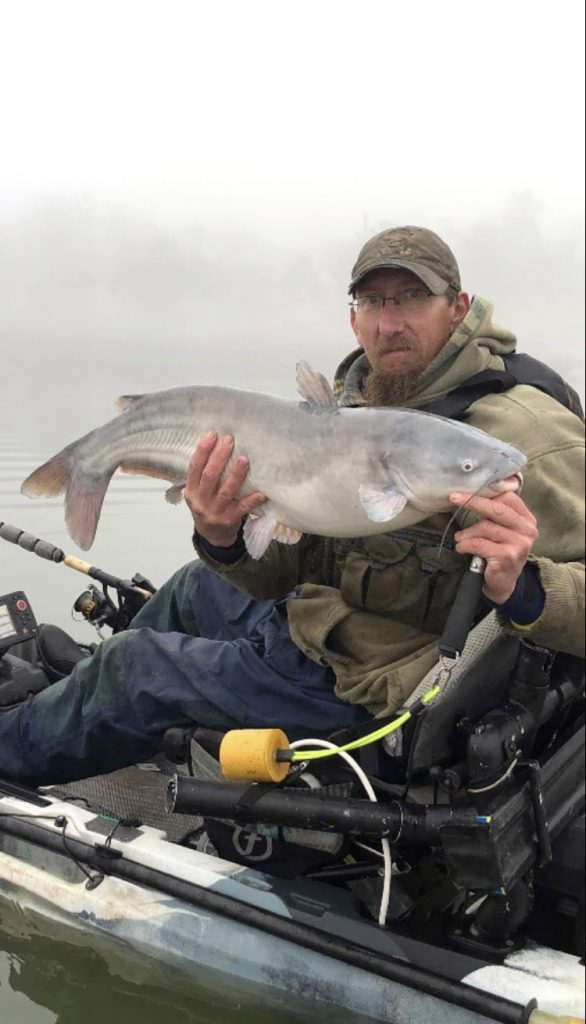
Roy Boyd Jr. holds up a blue catfish, an invasive species plaguing the main bay and beyond. Roy is a well-known angler in the upper bay and an enthusiastic advocate for water safety. Photo courtesy of Roy Boyd Jr.
There’s a great deal of variance in the kayak world—from sit-in vs sit-on-top, to hull shape, propulsion type, and more. Ultimately, the choice should be made based upon what best suits the circumstances and budget of an individual user, but certain considerations must be made.
Remember the old adage—“You get what you pay for.” Inexpensive kayaks are almost ubiquitous these days, and many anglers can certainly offer cautionary tales of impetuous purchases from big box stores and discount retailers.
Branding isn’t important, but quality very much so is. Dealers that offer demo-days or sea trials, outfitter rentals, books, and even online forums can help inform your decision.
The right platform is critical. You can certainly fish from touring-style kayaks, but it will be remarkably easier to do so from a purpose-built craft. Remember, add-ons and upgrades can be made later, but the hull cannot be changed.
Ensure that the boat is well sized to the user. Exceeding the capacity of your kayak will compromise its stability and risks catastrophic failure.
For the sake of safety and performance, the combined weight of the kayaker and all gear should be well under total capacity. The boat’s length and width will affect its function and performance. A wider beam offers stability whereas a more narrow boat offers speed and better tracking in the water. Hull shape also affects performance in a variety of ways.
Consider comfort as well. Legroom, a functional seat and backrest, ergonomics, and even gear accessibility should be taken seriously be-cause you’ll be seated in that position for several hours.
Perhaps the biggest delineation these days is propulsion type. Paddles are simple and dependable but pedal-driven mechanisms can be quite useful. Such innovations leave your hands free for fishing and enable longer trips as your legs are less likely to wear out than your arms and shoulders. Some anglers push things a bit further by adding trolling mo-tors or even small outboards—further increasing range but also adding weight, complexity, and potential limitations. Some of the best fishing grounds are only accessible to boats with a very shallow draft—an opportunity for most kayaks but a challenge for those making use of props or fins under the hull.
Once a motor is involved, kayaks must be registered with the department and will be subject to additional requirements such as displaying navigational lights between legal sunset and sunrise.
Lastly, think about storage and mobility. How will you keep the kayak and move it from place to place? Will its weight and dimensions allow for a car top launch or will a truck bed or trailer be necessary? Don’t forget to account for the parking options at your favorite put-ins and be sure to fully understand the logistics of launch and retrieval.
Safety
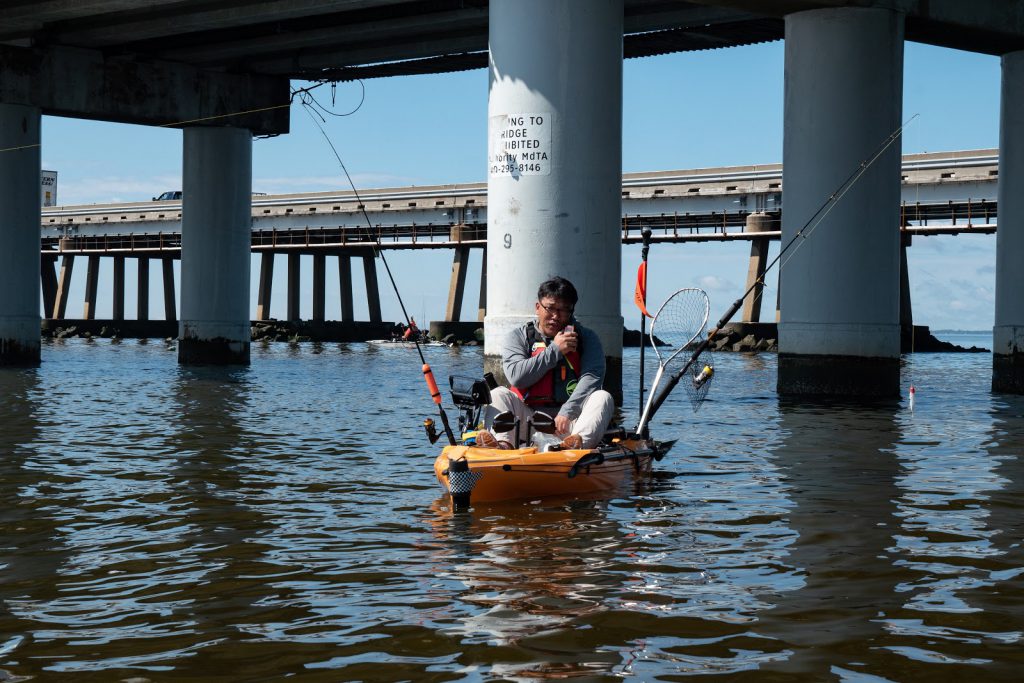
An angler relays fishing conditions to a friend via VHF Radio. In expansive waters and inclement conditions, mobile phones are often ineffective.
Safety should always be paramount. By Maryland law, each kayaker is required to have a Coast Guard-approved personal flotation device. It needs to be readily accessible and in good working order. Though not required by law, the department strongly encourages wearing that personal floatation device at all times. Kayakers must also have a proper audible signal such as a bell, horn or whistle. From dusk to dawn, a white light visible from all directions must be carried (and displayed when necessary for safe navigation for surrounding boat traffic).
Going beyond the minimums is strongly encouraged. Experienced kayak anglers can attest to the importance of additional precautions and gear. Even stable conditions come with risks. Kayaks are slow-moving, low to the water and can be hard to see from a distance. Wear brightly colored clothing, consider displaying a flag during daylight hours, and keep your line of vision wide and varied. Use a VHF radio and monitor traffic on channels 13 and 16.
Understand the specifics of where you intend to paddle. Local factors such as dams, competing boat traffic, underwater hazards, and restricted areas may impact your outing. Nautical charts, water trail maps and river guides can be excellent resources for planning.
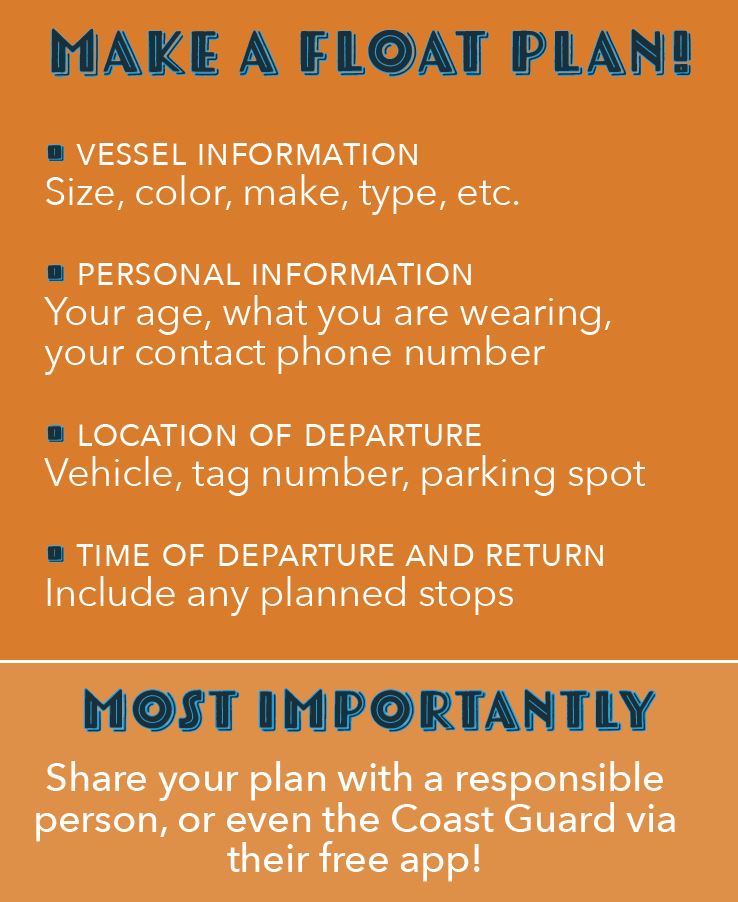 Be thorough in assessing weather conditions before launching. Conditions on the water can be very different from those found on land. Pay close attention to marine forecasts and wind reports. Many folks discount the impact of wind – don’t. Before you travel, reach out to fellow anglers or tackle shops for local knowledge. Consider changing or cancelling plans if necessary – pushing limits is simply ill-advised.
Be thorough in assessing weather conditions before launching. Conditions on the water can be very different from those found on land. Pay close attention to marine forecasts and wind reports. Many folks discount the impact of wind – don’t. Before you travel, reach out to fellow anglers or tackle shops for local knowledge. Consider changing or cancelling plans if necessary – pushing limits is simply ill-advised.
Lastly, make a float plan and share it with someone. Answer these questions: Where will you launch from and when? Are you alone or with others? Where will you go and for how long? When will you be expected back?
Exposure
Every kayaker should know going in that they’re going to get wet. In the warmer months, this truth may have little consequence – but it’s something to plan for.
Hypothermia can happen even in seemingly warm water. In colder water, it’s nearly assured. For those who wish to safely extend the typical season, additional gear is a must. Old timers and those cutting corners may suggest dry socks, wool clothing, waders, or wetsuits but all have been proven insufficient in full immersion situations. The current standard is the dry suit. They were once bulky and expensive, but kayak angling’s growing popularity has advanced their functionality and affordability.
Consider sun and wind exposure as well. Sunblock, layered performance clothing, and eyewear are all easy ways to mitigate potential issues.
Have a plan for emergencies before they happen. Find a safe environment and practice capsizing, self-rescue, and re-entry.
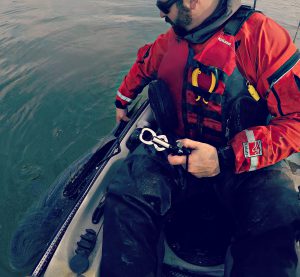
Alan Battista quickly releases an impressive striped bass caught during trophy season. Alan is an accomplished angler and author of several kayaking guide books specific to the Chesapeake Bay. Photo courtesy of Alan Battista.
Where to Go and What to Target
Inexperienced kayak anglers are encouraged to begin with still water or near-shore excursions as they learn the nuances of the sport and expand the limits of their own abilities.
Small ponds, lakes, creeks and rivers can provide excellent fishing opportunities for a variety of fish. Common species to look for include largemouth and smallmouth bass, pickerel, bluegill, spot, croaker, perch, crappie, catfish, longnose gar, northern snakehead, and many others.
Though not a definitive rule, the larger the water body, the larger the possible catch. It’s not uncommon these days to see kayak anglers in open water, several miles out in the Chesapeake Bay chasing striped bass, red drum, Spanish mackerel, and cobia. Exceptionally well equipped, experienced anglers might even take advantage of oceanic waters as well.
Such adventures come with inherent risk though. Big fish may sometimes have the upper hand against lightweight kayaks. Aside from being dragged around and getting worn out while fighting the beasts, there are capsizing risks when the fish is close, being landed, unhooked or released.
When you’re ready to join the growing fleet, do your homework, put in the time. There are many resources out there to help you get started. Books, websites, kayak dealers, and social media groups can all offer relevant insight specific to your location and fishing intentions.
If you have questions, ask them. Fellow anglers who’ve been at this a while are often eager to help. It’s still a small community and things are constantly evolving. When it comes to both success and safety there’s a great deal we can learn from each other. Gear up, get ready, and we’ll see you out there.
Calm seas and tight lines!
dnr.maryland.gov/boating
Stephen Badger is a public affairs officer for the Maryland Department of Natural Resources Office of Communications, photographer, and an avid kayak angler. Contributing to this article were Bruce Kellman, Alan Battista, and Roy Boyd Jr. Article appears in Vol. 23, No. 3 of the Maryland Natural Resource magazine, fall 2020.

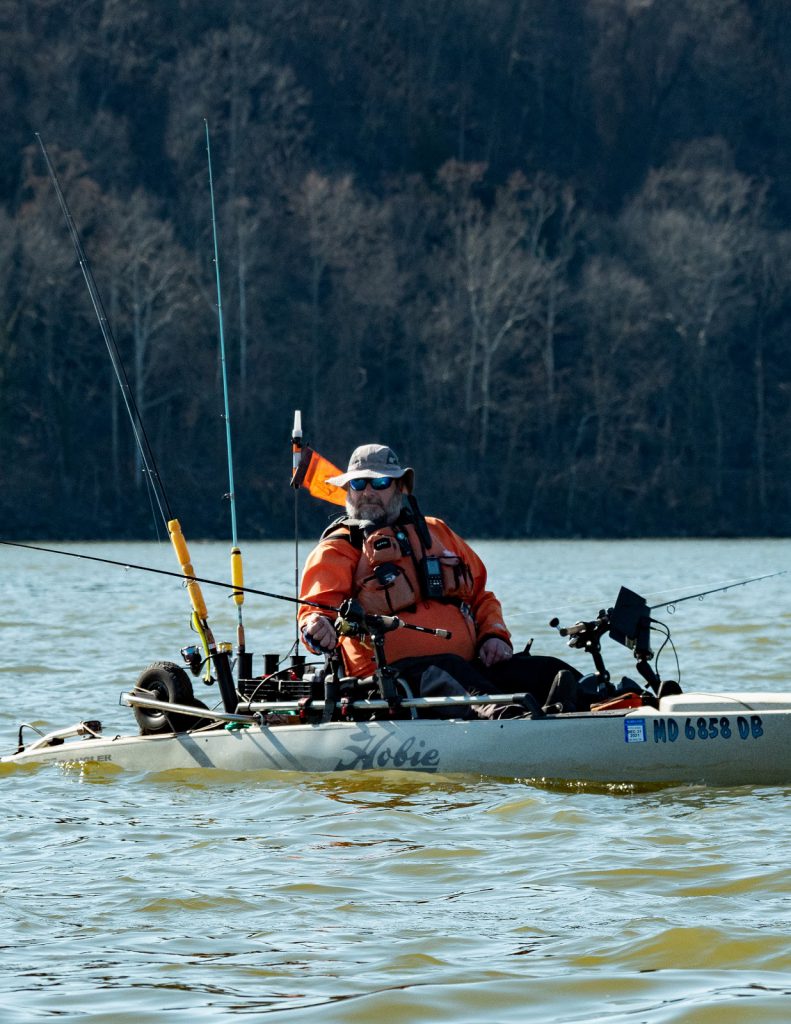

 1-888-373-7888
1-888-373-7888 233733
233733